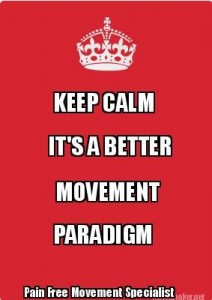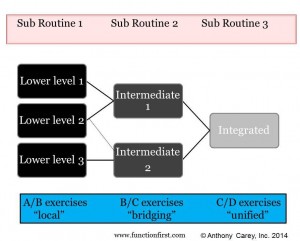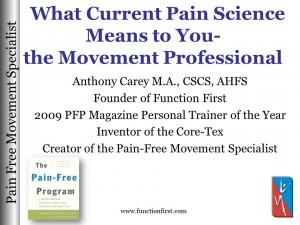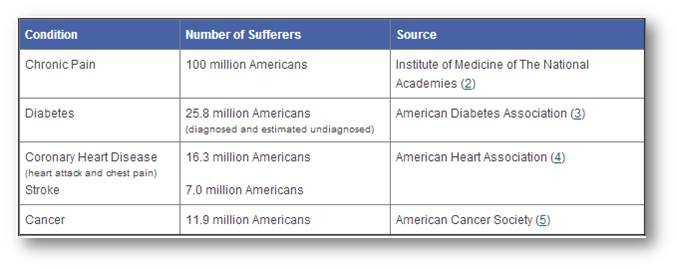By Kevin Murray
Function First Director of Education
Tight and Weak, Stretch and Strengthen.
“The biology of pain is never really straightforward, even when it appears to be”. Lorimer Moseley, a renowned neuroscientist and pain researcher succinctly articulates the wonderfully puzzling, yet astonishingly complex nature of working with the chronic pain population.
For years, an adored approach to working with clients from a corrective exercise perspective has been labeling various muscles as being unyielding and “tight”, and tagging their antagonistic counter parts as feeble and “weak”. Though this outlook can be effective, utilizing this strategy presupposes several things.
The most obvious presupposition is that tight muscles are directly responsible for the source of pain. Remembering that “pain is never really straight forward” and muscles are part of a ubiquitous, interdependent whole-istic system, it’s rather audacious to conclude a tight muscle is the sole perpetrator behind the chronic pain suffer. Make no mistake; short or hypertonic tissue can wreak havoc on an individuals’ structure, disrupting the harmonious tensional balance resulting in excessive compression to delicate regions.
If this is the case, maybe the question that needs asking is “why is the tissue tight in the first place?” Perhaps the tissue is tight due to an up-regulation of the sympathetic nervous system to increase stability around a specific joint. Another reason may be the client has impaired propriceptive input due to an old injury, or is lacking in areas of motor control. In any case, stretching the tissue may in fact put the body at greater risk for injury.
Additionally, many clients reference how “tight” particular muscles feel, and intuitively want to stretch them out. What feels like tight tissue may not necessarily equate to an actual shortness in the tissue itself. If an area of myofascia is eccentrically locked long, therefore having lost much of its elastic properties to recoil, than stretching already elongated tissue may exacerbate the symptoms’ long term.
Second, due to longitudinal and areolar force distribution, coupled with our understanding of bio-tensegrity, the source of movement dysfunction may be quite distant from where pain is actually felt. The temptation to focus on where clients’ feel their pain is naturally strong. However, a comprehensive understanding of how forces are mitigated and distributed is critical when working with the chronic pain population.
Lastly, the sensation of tightness may be related to current or unresolved biopyschosocial stressors. Pain is always the output. Nothing has the element of pain, except that which the brain represents as being painful. This means that pain may in fact be related to any previous physical, emotional, spiritual and psychological traumas that have yet to be resolved. While stretching a tight muscle and strengthening its weak antagonist may in fact be a successful intervention for some, to say this approach will work for all clients’ experiencing chronic pain is foolhardy.
Corrective Exercise will “fix” your clients
Words have a powerful force attached to them. They have the potential to inspire people to limitless heights of achievement. However words can just as easily, and perhaps even more rapidly, change your chronic pain clients’ perception of any given situation, and even themselves.
What does the word fix have built into it? “Fixing” presupposes that something is broken. Fixing puts the onus and responsibility on the corrective exercise professional, and not on the client. This is not a recipe for creating lasting change. Furthermore, is anyone really broken?
Words have meaning directly built into them. Additionally, words said with enough emotion, intensity and repetition can create an identity, one that’s either empowering or disempowering.
What if an environment was created where clients’ were encouraged to modify their habitual language patterns? Could this be an impetus for creating lasting change even before the assessment and exercise intervention takes place? Becoming acutely aware to the power of language allows us to create a fresh canvas for our clients to begin designing a new biological, psychological and social blueprint.
This seemingly small shift provides a platform for all clients to be responsible (response-able) for their own chronic pain limitations. A new blueprint that has the capacity to positively influence and enrich all aspects of their personal and professional lives, including their pain and movement limitations.
Foam Rolling & Pain
Clients’ seek out corrective exercise experts for a variety of reasons. Most are desperately looking for a long-term solution to their chronic pain concerns. A foam roller can be a positive catalyst within the programming process. However, a foam roller should never supplement or supersede strategic and purposeful movement.
Foam rolling can be awkward and challenging for many with chronic pain and movement constraints. On top of that, clients often find it painful, which is paradoxical to their ultimate objective. This begs the question “does foam rolling have to be painful?”
Contrary to current perceptions, foam rolling does not need to be painful to be effective. A soft foam roller provides a first-class environment where tissue can re-hydrate. An environment where gentle pressure and compression is applied can increase the hydrodynamics surrounding various layers of connective tissue, further facilitating the glide and slide of the tissue, which in turn can dramatically improve joint motion.
Crossing the clients’ foam rolling threshold from discomfort to pain is counter productive. Foam rolling should always be purposeful & strategic, and complimentary to the corrective exercise programming syntax and overall movement based outcomes.
The Function First Approach is unique in that there is not a “one size fits all” blueprint, and no black and white template. Each client is different, and so is their pain. Pain is complex, and designed to serve an ultimate purpose. Simply stated, we’ve got to be dynamic in our approach rather than ridged.
When working with individuals from a corrective exercise standpoint, we must ask the body, rather than tell it.
This enables each corrective exercise to build off the previous, providing a powerful platform to launch each client into pain free living. The future of corrective exercise has arrived, and the Function First Approach is The Exercise Alternative for Pain Relief.
Join us as a Pain Free Movement Specialist



